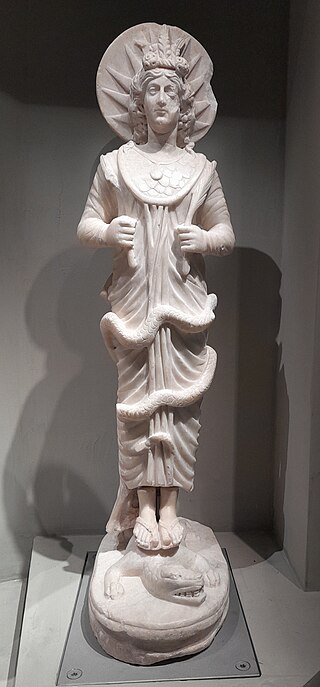Top Qs
Timeline
Chat
Perspective
Dionysus-Osiris
Syncretism of the Egyptian god Osiris and the Greek god Dionysus From Wikipedia, the free encyclopedia
Remove ads
Dionysus-Osiris, alternatively Osiris-Dionysus, is a deity arising from the syncretism of the Egyptian god Osiris and the Greek god Dionysus.

Syncretism
The two deities had been identified with each other as early as the 5th century BC, as recounted in the Histories of Herodotus:[1]
For no gods are worshipped by all Egyptians in common except Isis and Osiris, who they say is Dionysus; these are worshipped by all alike. [...] Osiris is, in the Greek language, Dionysus.
Other syncretic deities arose from these Egyptian-Greek conflations, including Serapis and Hermanubis.
Dionysus-Osiris was particularly popular in Ptolemaic Egypt, as the Ptolemies claimed descent from Dionysus, and as pharaohs claimed the lineage of Osiris.[2] This association was most notable during a deification ceremony where Mark Antony became Dionysus-Osiris, alongside Cleopatra as Isis-Aphrodite.[3]
In the controversial book The Jesus Mysteries, Osiris-Dionysus is claimed to be the basis of Jesus as a syncretic dying-and-rising god, with early Christianity beginning as a Greco-Roman mystery.[4] The book and its "Jesus Mysteries thesis" have not been accepted by mainstream scholarship, with Bart Ehrman stating that the work is unscholarly.[5]
Remove ads
See also
References
External links
Wikiwand - on
Seamless Wikipedia browsing. On steroids.
Remove ads
